60+Research Articles Focused on the Health Benefits of Polyphenols, Flavonoids, and Carotenoids
When you are ready to dig deeper into the benefits of polyphenols, flavonoids, anthocyanins, and carotenoids to human health and prevention of disease, check out these articles in peer-reviewed scientific journals. Each of these demonstrates the protective and restorative benefits of a diet rich in naturally occurring polyphenols. This is a “Fruitful” level exploration. Don’t feel overwhelmed. This is “enrichment” for those who want more information and to see the evidence that our masterclasses are based on.
60+ Downloadable Documents
Peruse them here or download the masterlist. At the time that this article was published each one of these articles was downloadable as a pdf document. That might not always be the case as URLs can change.
Apak, Resat. et als. “Novel Total Antioxidant capacity index for dietary polyphenols and Vitamins C and E, using their Cupric Ion reducing capability in the presence of Neocuproine.” J. Agric. Food Chem. 52, 7970-7981. 2004. Click here to see the article.
Bast, Aalt. et als. “Protection by Flavonoids against anthracycline cardiotoxicity: from chemistry to clinical trials.” Cardiovascular Toxicology, 2007, 7:154-159. Click here to see the article.
Bigagli, Elizabeth, Lorenzo Cinci, Mario D’Ambrosio, and Cristina Luceri. “Pharmacological activities of an eye drop containing Matricaria chamomilla and Euphrasia officinalis extracts in UVB-induced oxidative stress and inflammation of human corneal cells.” Journal of Photochemistry and Photobiology. 173, 618-625. 2017. Click here to see the article.
O’Byrne, Dawn J. Sridevi Devaraj, Scott M Grundy, and Ishwarlal Jialal. “Comparison of the antioxidant effects of concord grape juice flavonoids and alpha-tocopherol on markers of oxidative stress in healthy adults.” American Journal of Clinical Nutrition. 2002:76, 1367-1374. Click here to see the article.
Cai, Yizhong, et als. “Antioxidant activity and phenolic compounds of 112 traditional Chinese medicinal plants associated with anticancer,” Life Sciences. Vol. 74, Iss. 17, 2157-2184, 2004. Click here to see the article.
Chan, Elena, Marisele Tan, and Dale Johnson. “Interactions between traditional Chinese medicines and Western.” Current Opinion in Drug Discovery & Development 2010, 13 (1):50-65. Click on “Download full-text PDF” on this page to get the article.
Dillard, Cora J, and J. Bruce German. “Phytochemicals: nutraceuticals and human health,” Journal of the Science of Food and Agriculture. 80(12), 1744-1756. 2000. Click here to see the article.
Dwyer, Johanna T. and Julia Peterson. “Tea and flavonoids: where we are, where to go next.” American Journal of Clinical Nutrition. 2013;98. 1611s-1618s. Click here to see the article.
Duthie, G. Garry, Peter T. Gardener, and Janet A. M. Kyle. “Plant polyphenols: are they the new magic bullet?” Proceedings of the Nutrition Society. 62(3): 599-603. 2003. Click here to see the summary and then select the “Full Text PDF” on the side.
Edris, Ann E. “Pharmaceutical and therapeutic potentials of essential oils and their individual volatile constituents: a review.” Phytotherapy Research. 2007. Click here to see the article.
Etminan, Mahyar, Bahi Takkouche, and Franciso Caamano-Isorna. “The Role of Tomato Products and Lycopene in the Prevention of Prostate Cancer: A Meta-Analysis of Observational Studies.” Cancer Epidemiology, Biomarkers, and Prevention. 13 (3), 340-347, 2004. Click here to see the article.
Farzaneh, Vahid. and Isabel S. Carvalho. “A review of the health benefit potentials of herbal plant infusions and their mechanism of actions,” Industrial Crops and Products. Volume 65, 2015, 247-258. Click here to see the article.
Fayazz, S. et als. “Is Quercetin Accumulating In Eggs Using Flavonoids-Enriched Poultary Feed?” The Journal of Animal and Plant Sciences. 26(5), 1479-1485, 2016. Click on “Download full-text PDF” on this page to get the article.
Friedman, Mendel. “Overview of antibacterial, antitoxin, antiviral, and antifungal activities of tea flavonoids and teas.” Molecular Nutrition and Food Research. 51, 116-134, 2007. Click here to see the article.
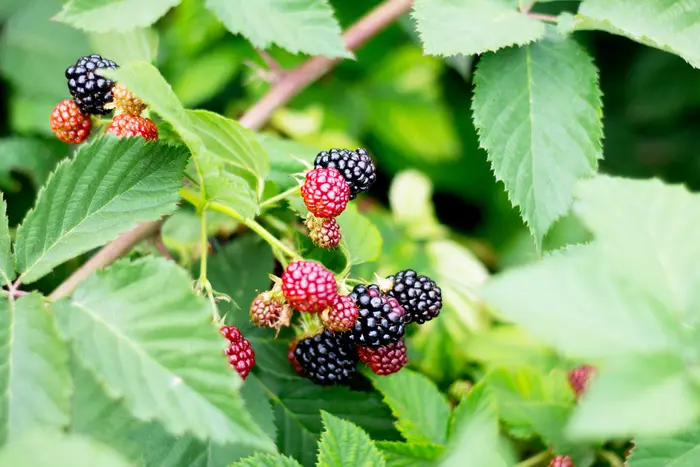
Blackberries on the branches in the garden. Soft focus.
Garcia-Closas, R., Gonzalez, C.A., Agudo, A. et al. “Intake of Specific Carotenoids and Flavonoids and the risk of Gastric Cancer in Spain.” Cancer Causes Control (1999) 10: 71. Click here to see the article.
Gerster, Helga. “The potential role of Lycopene for human health.” Journal of the American College of Nutrition. Vol. 16, 109-126, 1997. Click here to see the article.
Ghasemzadeh, Ali and Neda Ghasemzadeh, “Flavonoids and phenolic acids: Role and biochemical activity in plants and human.” Journal of Medicinal Plants Research, Vol. 5(31),6697-6703,2011. Click here to see the article.
Goleniowski, Marta, Mercedes Bonfill, Rosa Cusido, and Javier Palazon. “Phenolic Acids” Natural Products, 1951-1971. 2013. Click here to see the article.
Gonzalez R. et als. “Effects of Flavonoids and other Polyphenols on Inflammation,” Critical Reviews in Food Science and Nutrition, 51:4, 331-362. Click here to see the article.
Han, Rui-Min. Jian-Ping Zhang, and Leif K. Skibsted. “ Reaction dynamics of flavonoids and caretonoids as antioxidants.” Molecules. 17, 210-2130. 2012. Click here to directly download the article.
Heber, David and Qing-Li Yu. “Overview of the Mechanisms of Action of Lycopene.” Experimental Biology and Medicine. 227(10), 920-923, 2002. Click here to see the article.
Heim, Kelly C. and Anthony R. Tagliaferro, “Flavonoid antioxidants: Chemistry, Metabolism, and Structure-activity relationships.” The Journal of nutritional biochemistry 13(10):572-584. 2002. Click here to see the article.
Hertog, Michael G. L. et als. “Intake of potentially anticarcinogenic flavonoids and their determinants in adults in the Netherlands.” Nutrition and Cancer. Vol 20, Iss 1.21-30, 1993. Click here to see the article.
Husain, S.Rafat, Josiane Cillard and Pierre Cillard. “Hydroxyl radical scavenging activity of flavonoids,” Phytochemistry. Vol. 29, Iss. 9. 2489-2491. 1987. Click here to see the article.
Ibrahim, Mohd Hafiz, et als. “The Relationship between Phenolics and Flavonoids Production with Total Non Structural Carbohydrate and Photosynthetic Rate in Labisia pumila Benth. under High CO2 and Nitrogen Fertilization,” Molecules. 16, 162-174. 2011. Click here to immediately download the article.
Kanti Bhooshan Pandey and Syed Ibrahim Rizvi, “Plant Polyphenols as Dietary Antioxidants in Human Health and Disease,” Oxidative Medicine and Cellular Longevity, vol. 2, no. 5, pp. 270-278. Click here for the article summary, then click on “Full Text Pdf” on the right to download the full article.
Khachik F. P S Bernstein, and D L Garland. “Identification of Lutein and Zeaxanthin oxidation products in human and monkey retinas.” Investigative ophthalmology and visual science. Vol.38, 1802-1811, 1997. Click here to immediately download the article.
Kisolova, Yoana. et als. “Correlation between the in-vitro antioxidant activity and polyphenol content of aqueous extracts of bulgarian herbs.” Phototherapy Research. 20, 961-965. 2006. Click here to see the article.
Krinsky, Norman I., John T. Landrum, and Richard A. Bone. “Biologic Mechanisms of the Protective Role of Lutien and Zeaxanthin in the Eye.” Annu. Rev. Nutr. 23:171-201, 2003. Click here to see the article.
Lin, Derong. et als. “An Overview of Plant Phenolic Compounds and Their Importance in Human Nutrition and Management of Type 2 Diabetes.” Molecules. 21(10), 1371-1390. Click here to see the article.
Manganaris, George A., Vlasios Goulas, and Leon A. Terry. “Berry Antioxidants: small fruits providing large benefits.” Journal of the Science of Food and Agriculture. Vol/ 94, Iss. 5. 825-833, 2014. Click here to see the article.
Mena, P. et als. “Phytochemical Profiling of Flavonoids, Phenolic Acids, Terpenoids, and Volatile Fraction of a Rosemary (Rosmarinus officinalis L.) Extract.” Molecules 21(11). 1576-1592. Click here to immediately download the article.
Meydani, Mohsen and Syeda T. Hasan. Dietary Polyphenols and Obesity. Nutrients (ed Dietary Antioxidants). 2(7), 737-751, 2010. Click here to immediately download the article.
Miguel, M. G. “Anthocyanins: Antioxidant and/or anti-inflammatory activities.” Journal of Applied Pharmaceutical Sciences, 01 (06): 2011: 07-15. Click here to see the article.
Mussatto, Solange L. et als. “Extraction of antioxidant phenolic compounds from spent coffee grounds” Separation and Purification Technology. 83 (2011). 173-179. Click here to see the article.
McAnlis, GT. J McEneny, J. Pearce, and IS Young. “Black tea consumption does not protect low density lipoprotein from oxidative modification.” European Journal of Clinical Nutrition. 52. 204-206. 1998. Click here to see the article.
Nijveldt, Robert J, Els van Nood, Danny EC van Hoorn, Petra G Boelens, Klaske van Norren, Paul AM van Leeuwen; “Flavonoids: a review of probable mechanisms of action and potential applications”, The American Journal of Clinical Nutrition, Volume 74, Issue 4, 1 October 2001, Pages 418–425. Click here to see the article.
Oancea, Simona and Letitia Oprean. “Anthocyanins from biosynthesis in plants to human health benefits.” Acta Universitatis Cibiniensis Series E: FOOD TECHNOLOGY, Vol. XV (2011), no.1. Click here to see the article.
Panche, A. N. et als. “Flavonoids an overview.” Journal of Nutritional Science. Vol. 5, 2016. Click here to see the article.
Pandey, Kanti B. and Syed I. Rizvi. “Plant Polyphenols as dietary antioxidants in human health and disease.” Oxidative Medicine and Cellular Longlevity. Vol. 2, Iss. 5, 270-278. 2009. Click here to see the summary of the article. Then click on “Full Text PDF” on the right to download the complete article.
Rao, A. V. and S. Agarwal. “Role Of Lycopene As Antioxidant Carotenoid In The Prevention Of Chronic Diseases: A Review,” Nutrition Research, vol. 19 (2), 305-323, 1999. Click here to see the article.
Rao, A. V. and S. Agarwal, “Role of Antioxidant Lycopene in Cancer and Heart Disease.” Journal of the American College of Nutrition. 19 (5), 563-569, 2000. Click here to see the article.
Ren, Wenying. et als. “Flavonoids: Promising Anticancer agents.” Medical Research Reviews. Vol. 23, No. 519-534, 2003. Click here to see the article.
Rice-Evens, Catherine A., Nicholas J. Miller, and George Paganga. “Structure-Antioxidant Relationships of Flavonoids and Phenolic Acid.” Free Radical Biology and Medicine. Vol. 20, No. 7. 933-956, 1996. Click here to immediately download the article.
Seo, Kwon-II. et als. “Effect of curcumin supplementation on blood glucose, plasma insulin, and glucose homeostasis related enzyme activities in diabetic db/db mice.” Molecular Nutrition and Food Research. 52, 1-10. 2008. Click here to see the article.
Scotti, Luciana. et als. “SAR, QSAR and Docking of anti-cancer flavonoids and variants: a review.” Current Topics in Medicinal Chemistry. 2012, 12, 2785-2809. Click here to see the article.
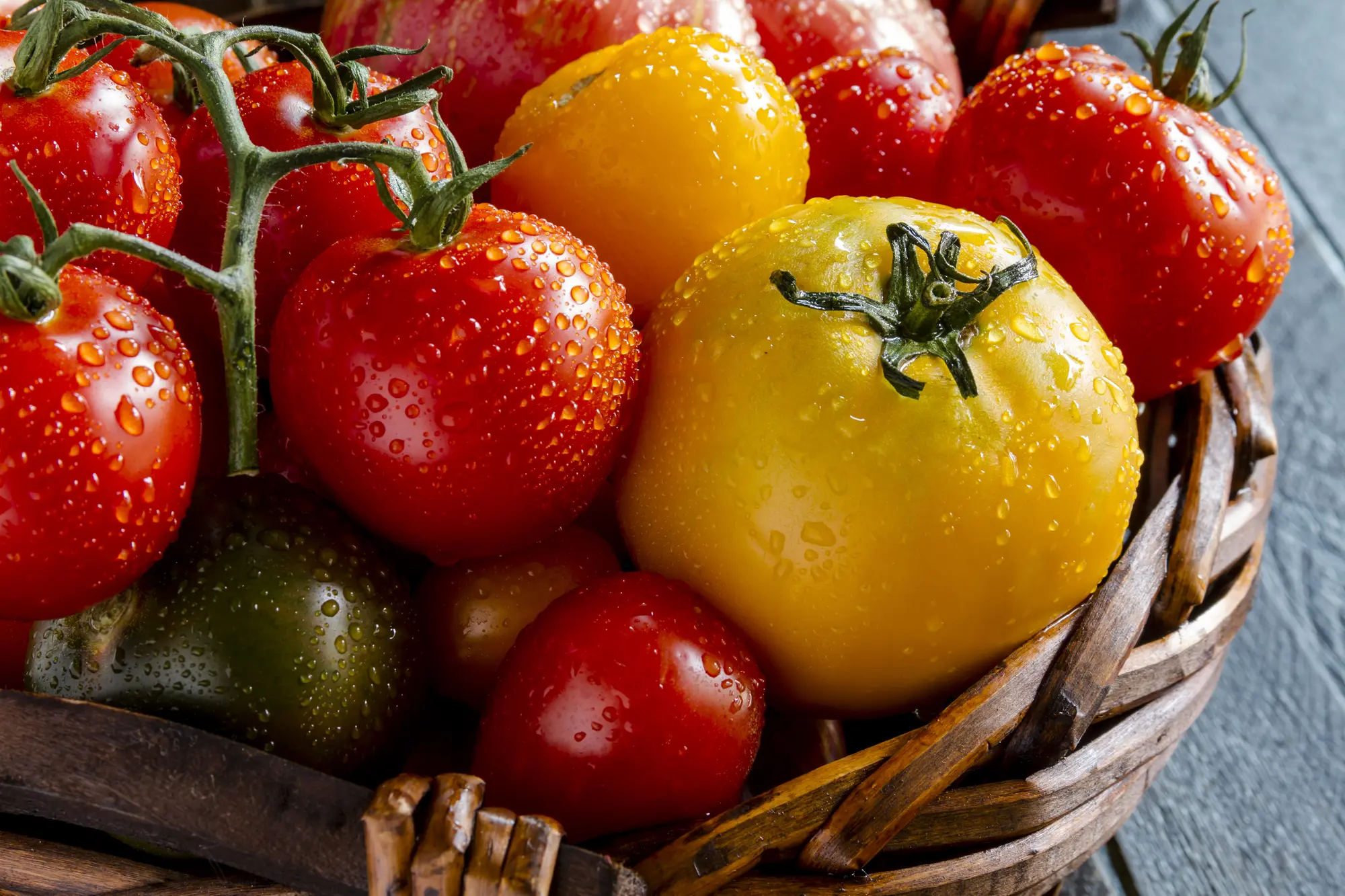
Assortment of colorful heirloom tomatoes with water drops in dark wooden basket
Shi, John and Marc Le Maguer. “Lycopene in tomatoes: Chemical and Physical Properties Affected by Food Processing.” Critical Reviews in Food Science and Nutrition. 40(1), 1-42, 2000. Click here to see the article.
Shih, Ping-Hsiao, Chi-Tai Yeh and Gow-Chin Yen. “Effects of anthocyanidin on the inhibition of proliferation and induction of apoptosis in human gastric adenocarcinoma cells,” Food and Chemical Toxicology, Volume 43, Iss. 10. 2005. 1557-1566. Click here to see the article.
da Silva, Jaime A. Teixeria. “Mining the essential oils of the Anthemideae” Africian Journal of Biotechnology. Vol. 3 706-720. 2004. Click here to see the article.
Sobral, Marianna Vieira. et als. “Antitumor Activity of Monoterpenes Found in Essential Oils.” The Scientific World Journal. 2014. Click here to immediately download the article.
Song, Brian Jay. “The Chemistry of Flavonoids in Model Beverages and Human Milk.” Purdue University. Click here to see the article.
Stahl, Wilhelm, and Helmut Sties. “Lycopene: A Biologically Important Carotenoid for Humans?” Archives of Biochemistry and Biophysics. Vol 336, (1), 1-9, 1996. Click here to see the article.
Stintzing, Florian C. and Reinhold Carl. “Functional Properties of anthocyanins and betalains in plants, food, and in human nutrition.” Trends in Food Science and Technology. 15 (2004), 19-38. Click here to see the article.
Stipcevic, Tamara, et als. “Effect of Different Flavonoids on Collagen Synthesis in Human Fibroblasts,” Plant foods for Human Nutrition. 2006. Click here to see the article.
Somasundaram, Sivagurunathan, Natalie A. Edmund, Dominic T. Moore, George W. Small, Yue Y. Shi and Robert Z. Orlowski. “Dietary Curcumin Inhibits Chemotherapy-induced Apoptosis in Models of Human Breast Cancer.” Cancer Research. 2002 (62) (13) 3868-3875. Click here to see the article.
Sommerburg O, Keunen JEE, Bird AC, et al. “Fruits and vegetables that are sources for lutein and zeaxanthin: the macular pigment in human eyes,” British Journal of Ophthalmology 1998; 82: 907-910. Click here to see the article.
Takahashi, Tomoya, Toshikazu Kamiya and Yoshiharu Yokoo. “Proanthrocyanidins from grape seeds promote proliferation of mouse hair follicle cells in vitro and convert hair cycle in vivio.” Acta Derm Venereol.1998, 79: 428-432. Click here to immediately download the article.
Tijburg, L. B. M. et als. “Tea Flavonoids and Cardiovascular Diseases: a Review,” Critical Reviews in Food Science and Nutrition. 37(8), 771-785, 1997. Click here to see the article.
Trongtokit, Yuwadee, Yupha Rongsriyam, Narumon Komalamisra and Chamnarn Apiwathnasorn, “Comparative Repellency of 38 Essential Oils against Mosquito Bites.” Phytotherapy Research, 19, 303-309, 2005. Click here to see the article.
Tsuda, Takanori. “Dietary Anthocyanin-rich plants: Biochemical basis and recent progress in health benefits studies,” Molecular Nutrition and Food Research. 2012, 56, 159-170. Click here to see the article.
Ullah R. et als. “Quantification and Antibacterial activity of Flavonoids in Coffee samples.” African Journal of Traditional, Complementary, and Alternative Medicines. Vol 12, (4). Click here to see the summary of the article. Then scroll down to select an email or download of the full text.
Vidak, Marko, Damjana Rozman, and Radovan Komel. “Effects of Flavonoids from Food and Dietary Supplements on Glial and Glioblastoma Multiforme Cells.” Molecules, 20, 19406-19432, 2015. Click here to see the article.
Viskupicova, Jana. Miroslav Ondrejovic, and Ernest Sturdik. “Bioavailability and metabolism of flavonoids.” Journal of Food and Nutrition Research. Vol. 47, No. 4, 151-162, 2008. Click here to immediately download the article.
Weston, Lesie A. and Ulrike Mathesius. “Flavonoids: Their structure Biosynthesis, and Role in the Rizospher, including Allelopathy.” Journal of Chemical Ecology. 39, 283-297. 2013. Click here to see the article.
YAO, L.H., JIANG, Y.M., SHI, J. et al. “Flavanoids in food and their health benefits.” Plant Foods for Human Nutrition (2004) 59: 113. Click here to see the article.
Yoshida, Takashi et als. “Studies on Inhibition Mechanism of Autoxidation by Tannins and Flavonoids. V. Radical-Scavenging Effects of Tannins and Related Polyphenols on 1, 1-Diphenyl-2-picrylhydrazyl Radical,” Chemical and Pharmacutical Bulletin 1989. 1919-1921. Click here to see the article.
Whoa! That’s a lot of material!
I realize this is a lot of scientific research to go through. You are not required to read every journal article. The Masterclass touched on a the main points of the benefits of polyphenols and carotenoids in food and herbs. These articles dig deeper into the ways these plant metabolites can improve human health and quality of life. The best way to approach this study is to look at the titles of the articles and look only at the ones that interest you. There are no tests. Don’t get overwhelmed.
Have Fun! Enjoy the research!
In the comments, tell us what aspect of Polyphenols, Flavonoids, and Carotenoids most interests you and why.
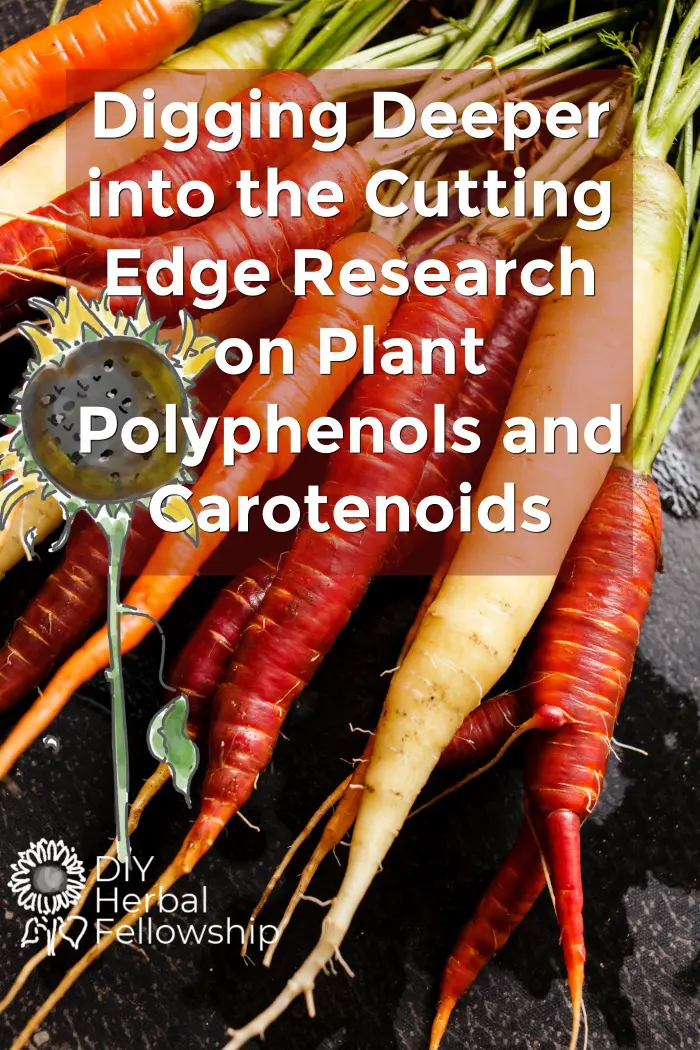

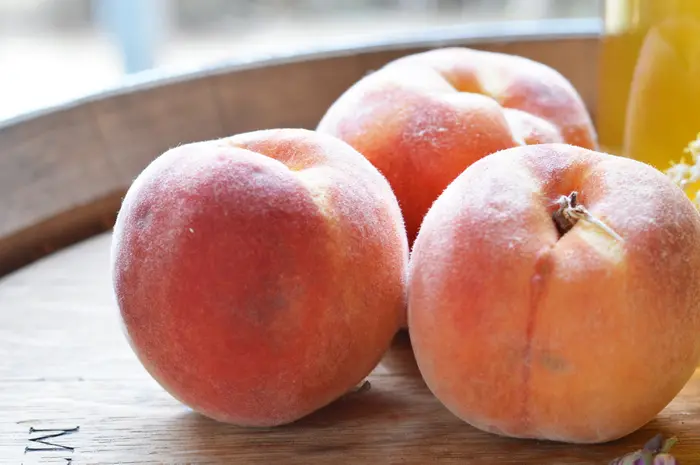
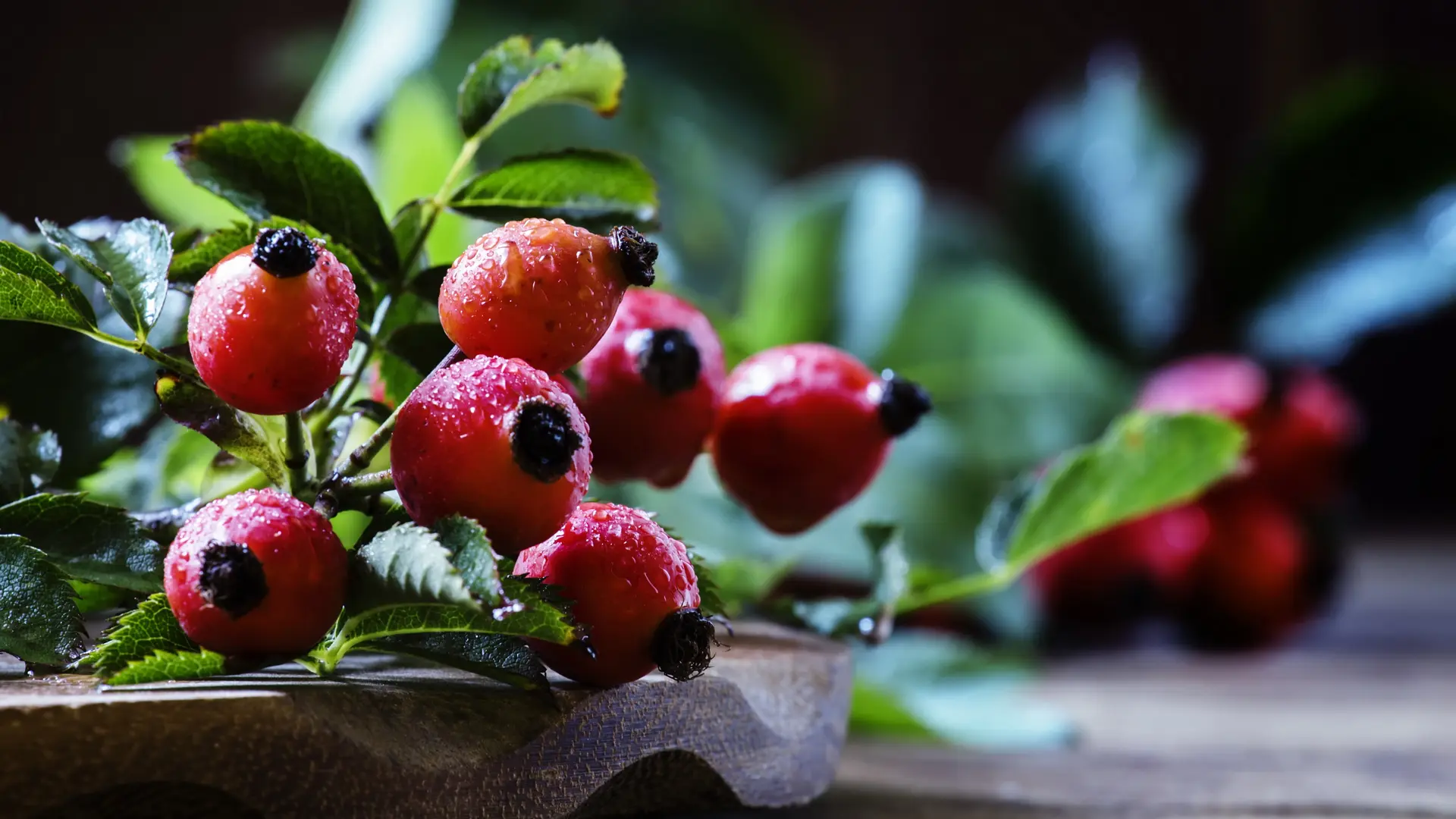
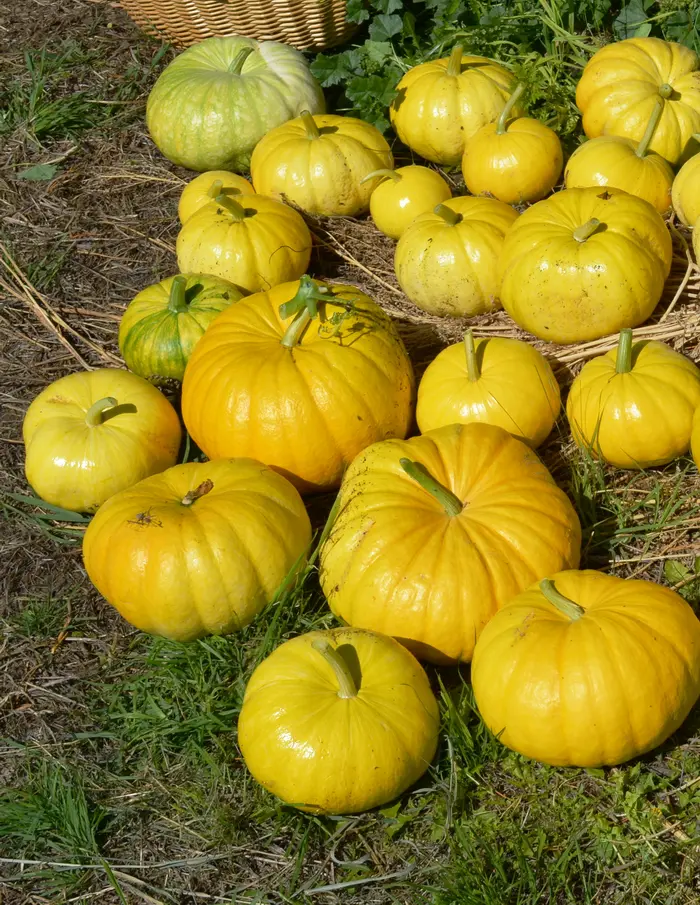
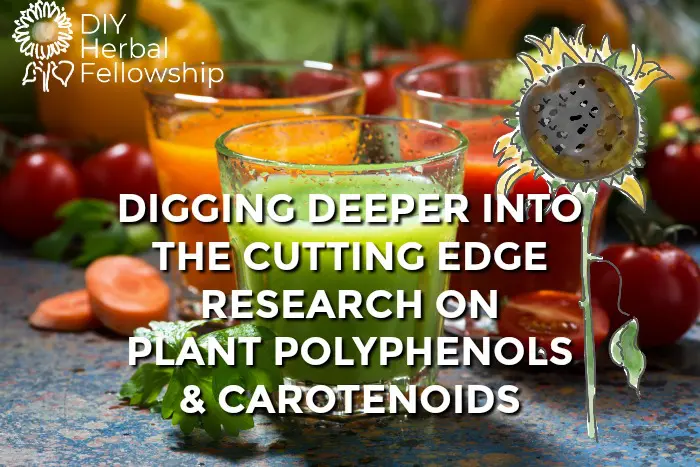

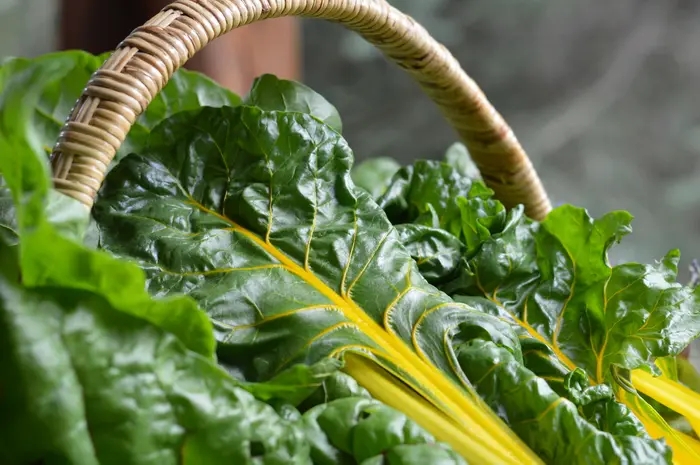
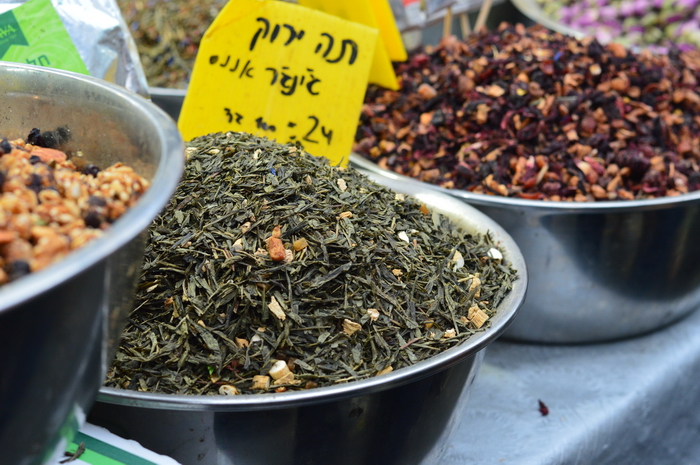
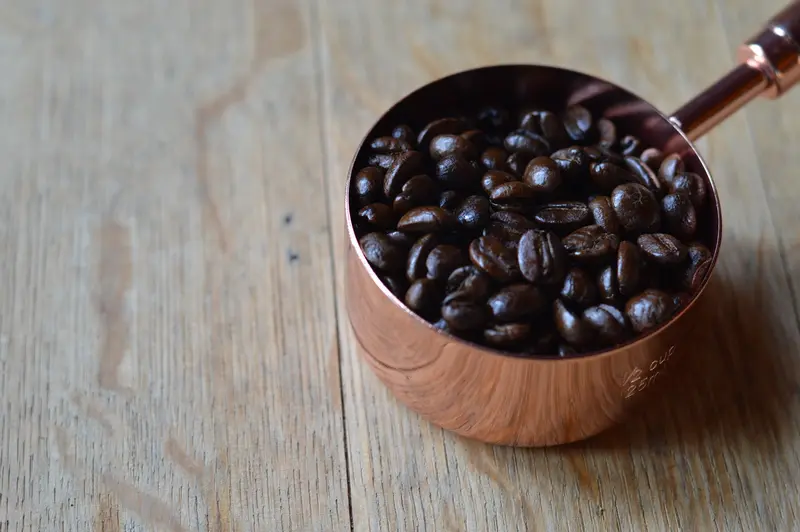
Leave a Reply
You must be logged in to post a comment.